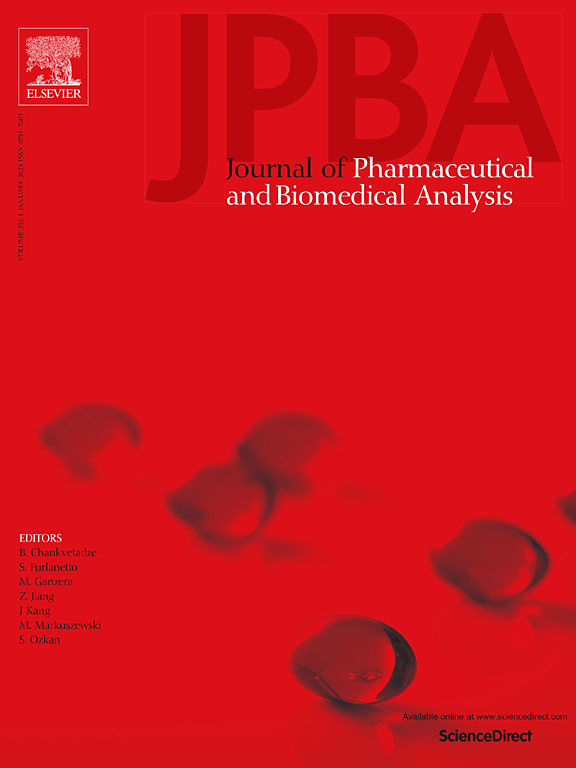Confined CHA-HCR system for sensitive and specific detection of ANXA2 mRNA in adenomyosis tissues
IF 3.1
3区 医学
Q2 CHEMISTRY, ANALYTICAL
Journal of pharmaceutical and biomedical analysis
Pub Date : 2025-01-26
DOI:10.1016/j.jpba.2025.116708
引用次数: 0
Abstract
Isothermal, enzyme-free amplification techniques, such as the hybridization chain reaction (HCR) and catalytic hairpin assembly (CHA), have gained significant attention for mRNA analysis. Despite their potential, these methods still face challenges, including false positives and low amplification efficiency. To overcome these limitations, we have developed a confined catalytic hairpin assembly and hybridization chain reaction (CHA-HCR) system that utilizes cholesterol-modified hairpin probes to enhance the sensitivity and specificity of mRNA detection. This system integrates cholesterol-modified hairpin probes (CHA probes) with hybridization chain reaction probes (HCR probes), leveraging hydrophobicity-mediated assembly to create a robust biosensing platform. The CHA-HCR system initiates a complex formation with the target mRNA, triggering a cascade of hybridization events that amplify the fluorescence signal. Employing ANXA2 mRNA as a model system, our results reveal that the CHA-HCR system achieves a detection limit (LOD) of 8.7 pM and offers high selectivity, effectively distinguishing ANXA2 mRNA from similar RNAs with single-base mismatches. Additionally, the CHA-HCR probes demonstrate stable detection performance in complex environments and exhibit excellent sensing capabilities in clinical tissue samples, successfully differentiating ANXA2 mRNA expression between leiomyoma and adenomyosis patient tissues. This study introduces a promising approach for the early diagnosis and monitoring of diseases associated with mRNA, potentially contributing to improved clinical outcomes and personalized treatment strategies.
求助全文
约1分钟内获得全文
求助全文
来源期刊
CiteScore
6.70
自引率
5.90%
发文量
588
审稿时长
37 days
期刊介绍:
This journal is an international medium directed towards the needs of academic, clinical, government and industrial analysis by publishing original research reports and critical reviews on pharmaceutical and biomedical analysis. It covers the interdisciplinary aspects of analysis in the pharmaceutical, biomedical and clinical sciences, including developments in analytical methodology, instrumentation, computation and interpretation. Submissions on novel applications focusing on drug purity and stability studies, pharmacokinetics, therapeutic monitoring, metabolic profiling; drug-related aspects of analytical biochemistry and forensic toxicology; quality assurance in the pharmaceutical industry are also welcome.
Studies from areas of well established and poorly selective methods, such as UV-VIS spectrophotometry (including derivative and multi-wavelength measurements), basic electroanalytical (potentiometric, polarographic and voltammetric) methods, fluorimetry, flow-injection analysis, etc. are accepted for publication in exceptional cases only, if a unique and substantial advantage over presently known systems is demonstrated. The same applies to the assay of simple drug formulations by any kind of methods and the determination of drugs in biological samples based merely on spiked samples. Drug purity/stability studies should contain information on the structure elucidation of the impurities/degradants.

 求助内容:
求助内容: 应助结果提醒方式:
应助结果提醒方式:


